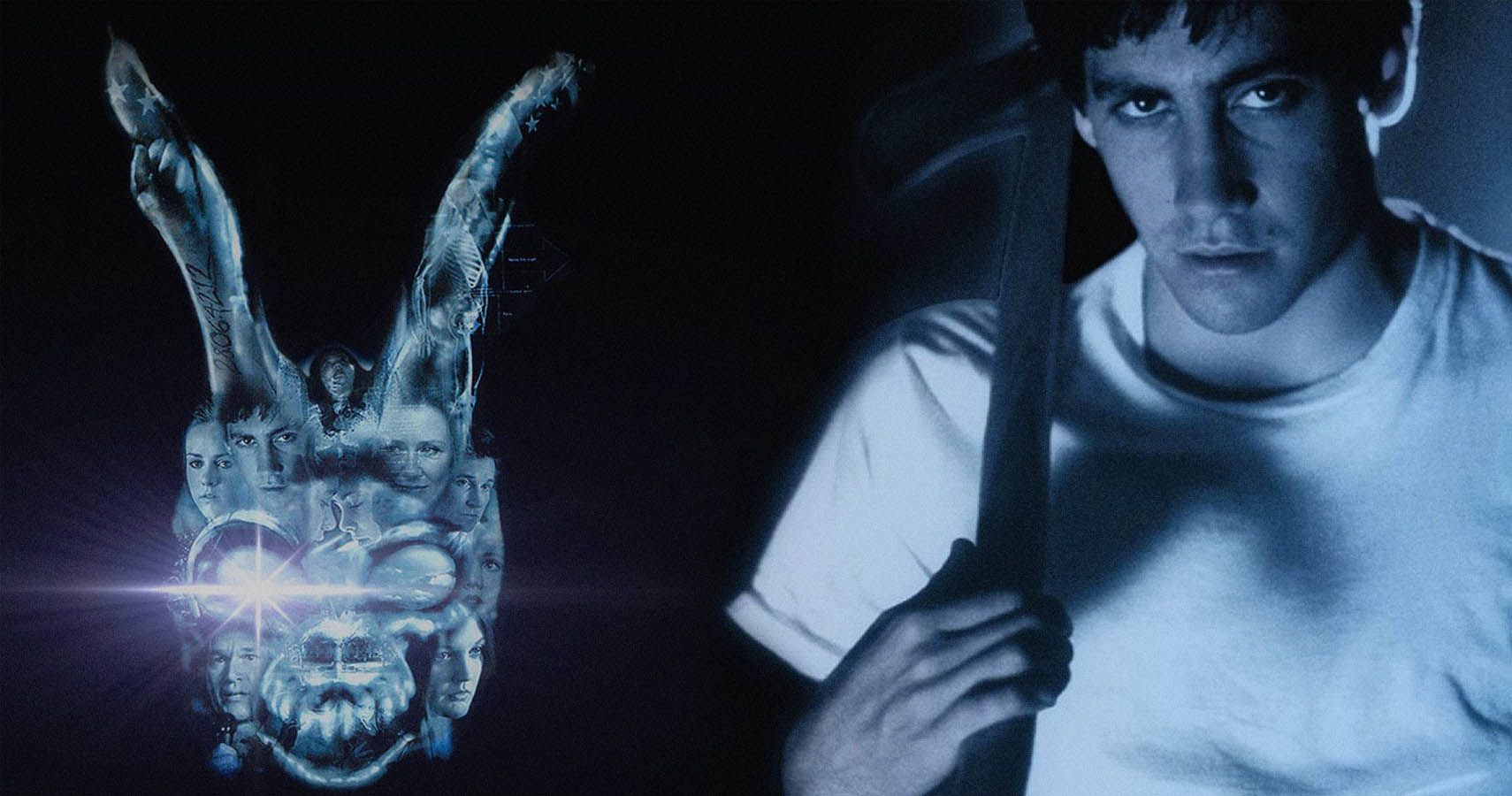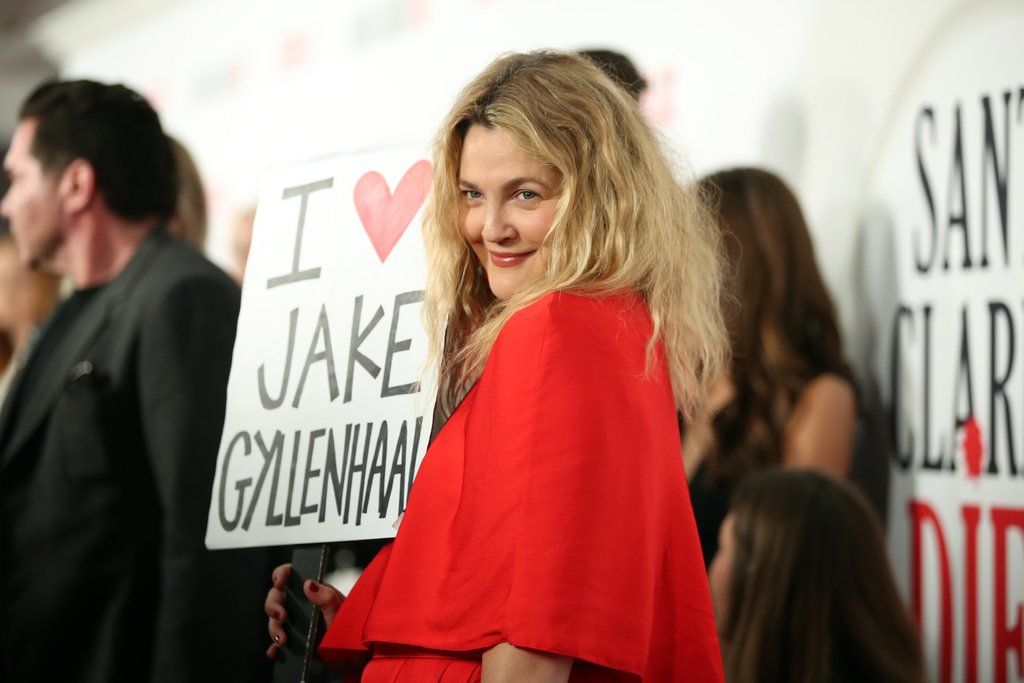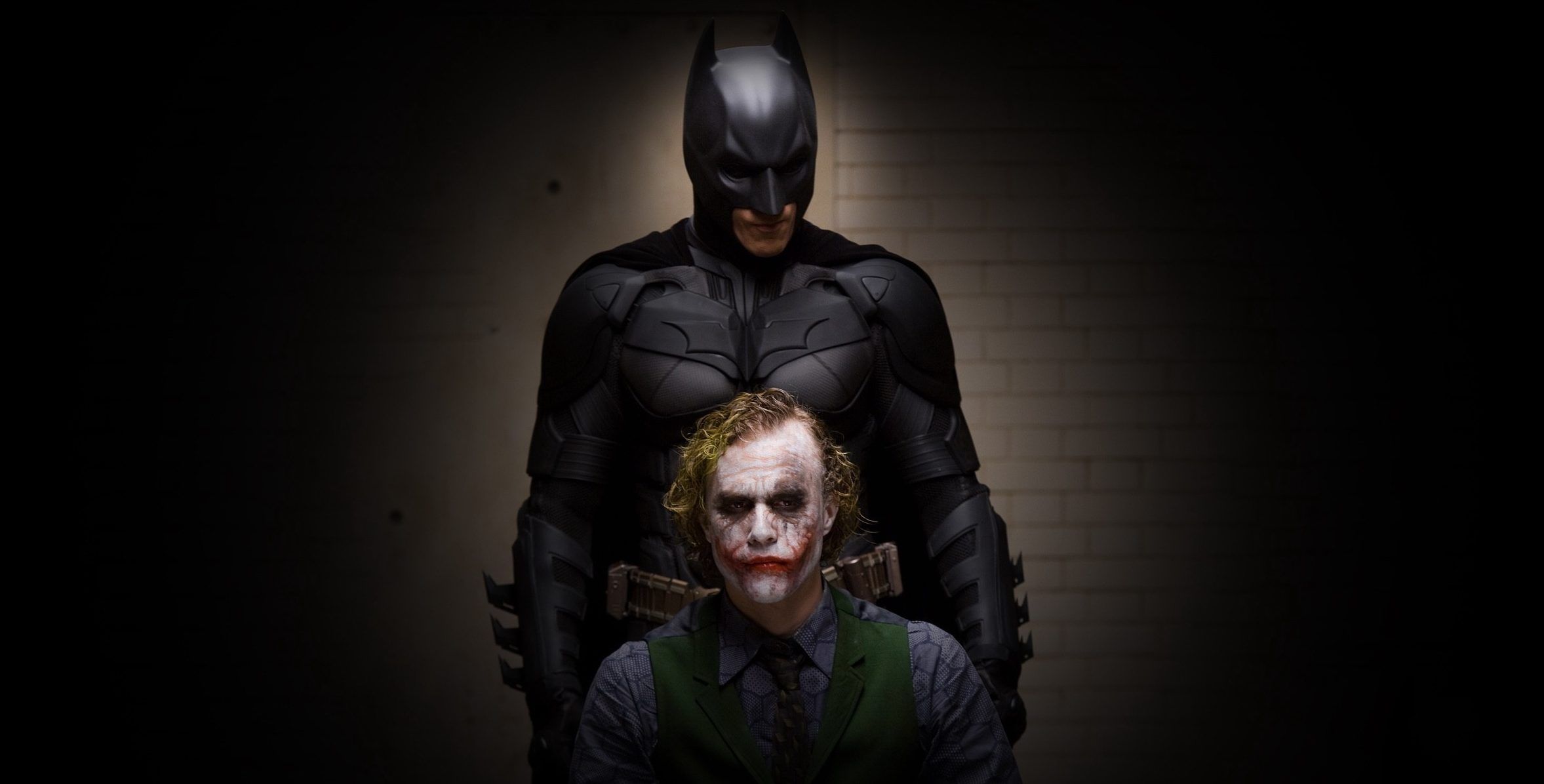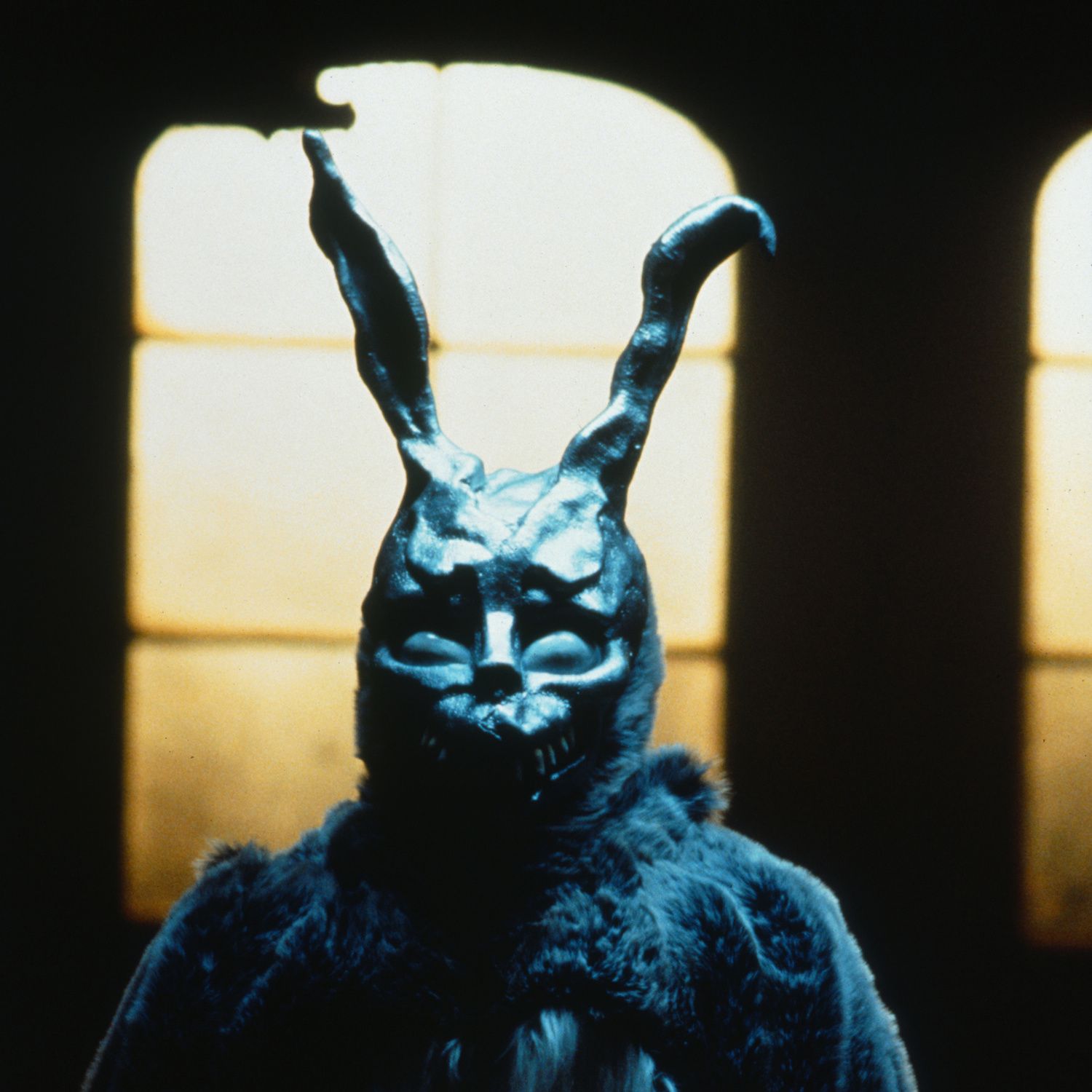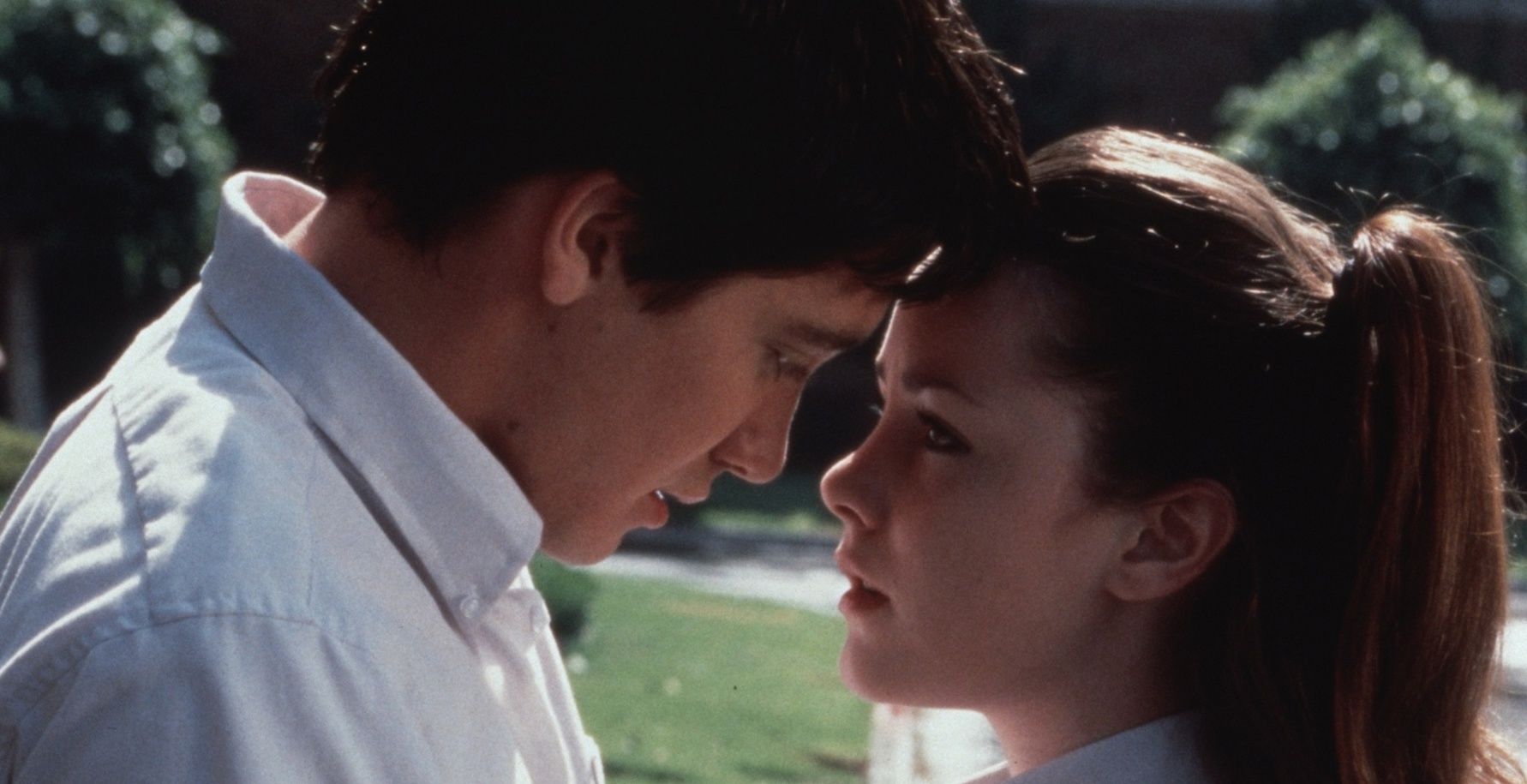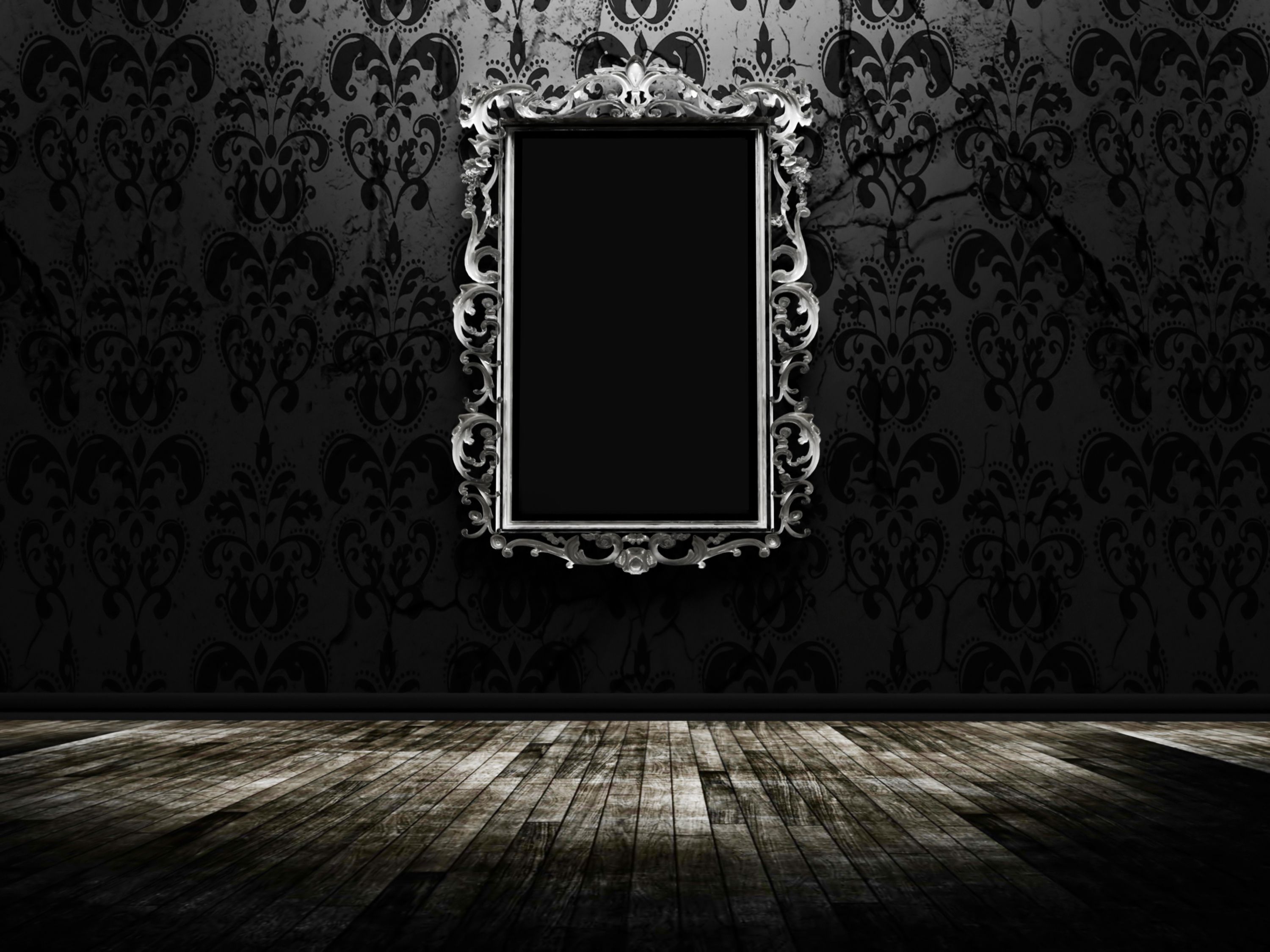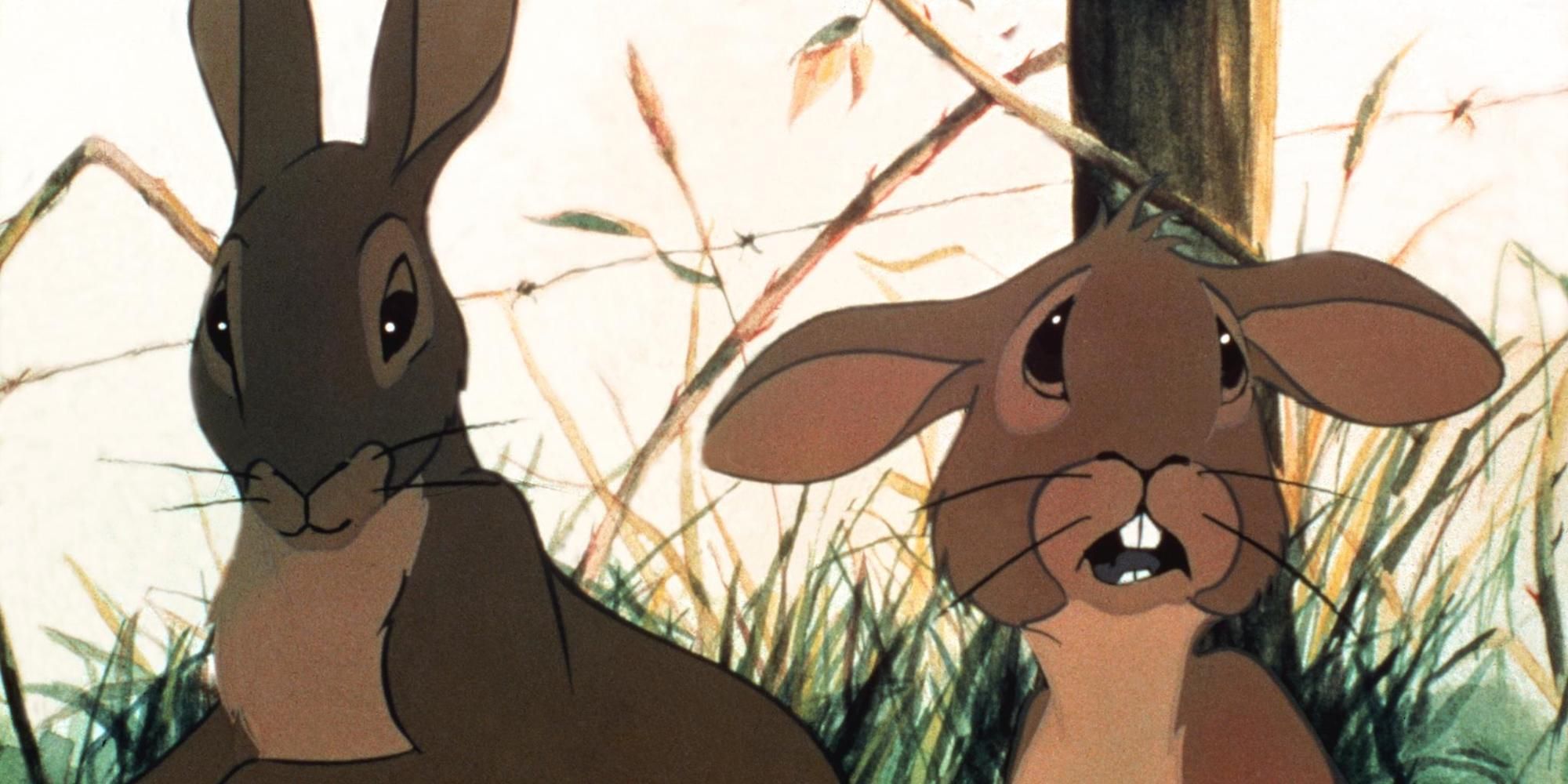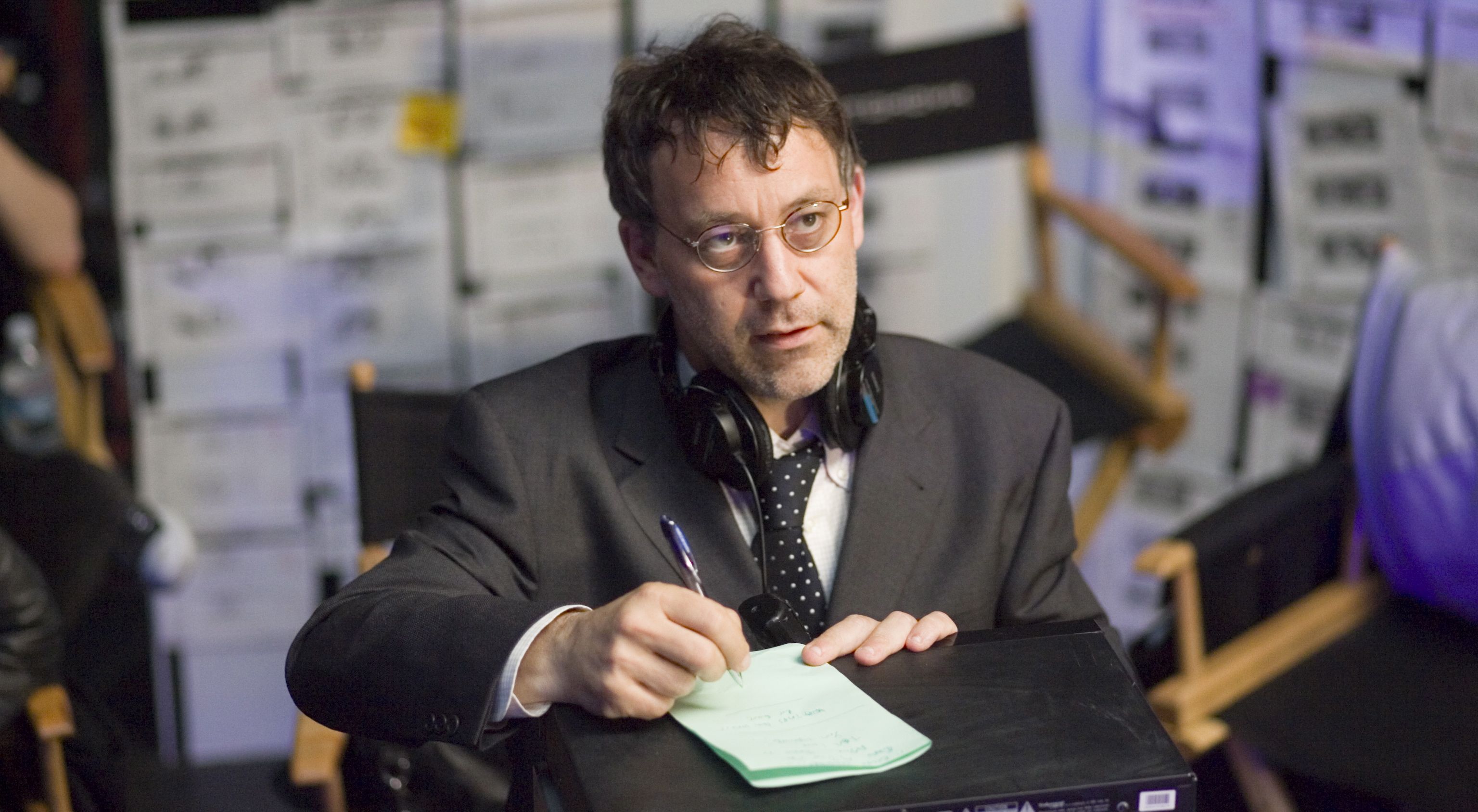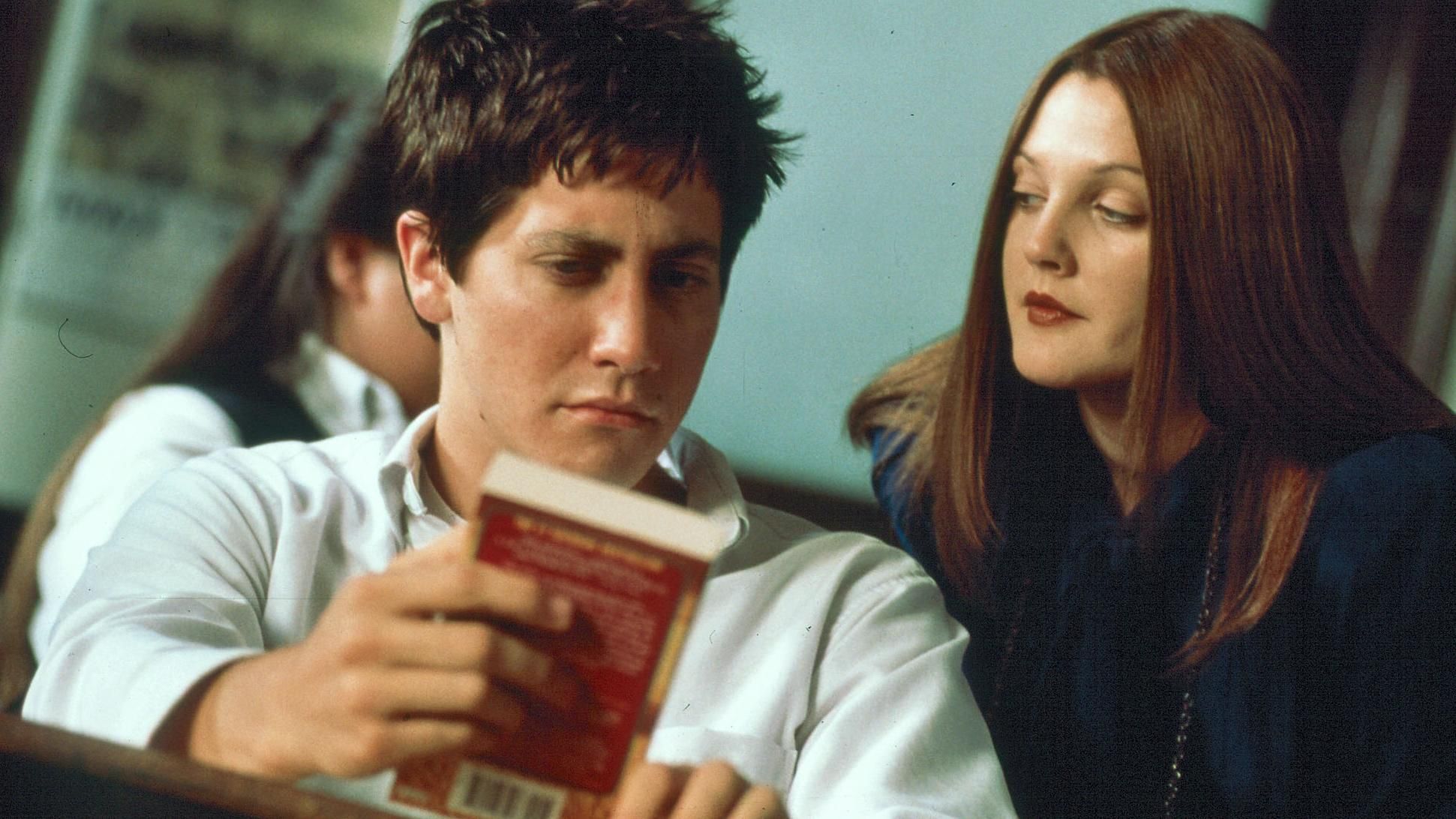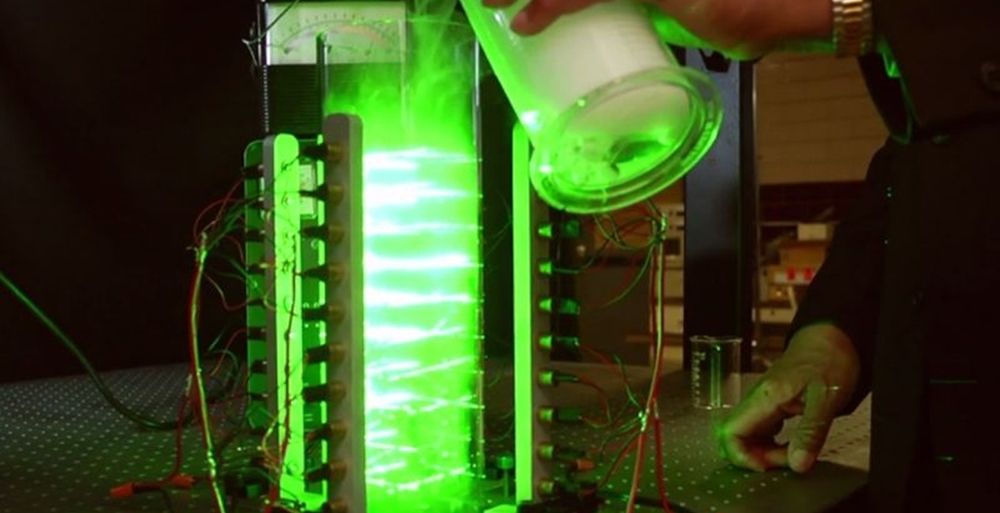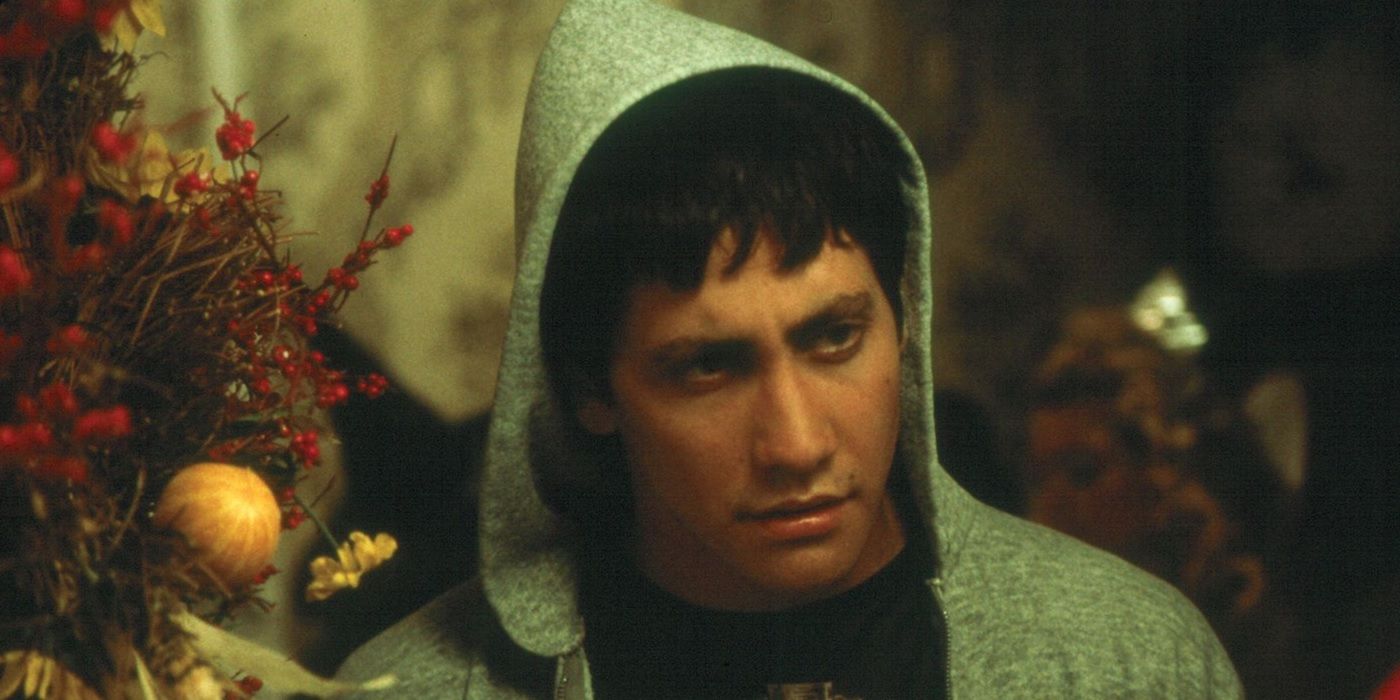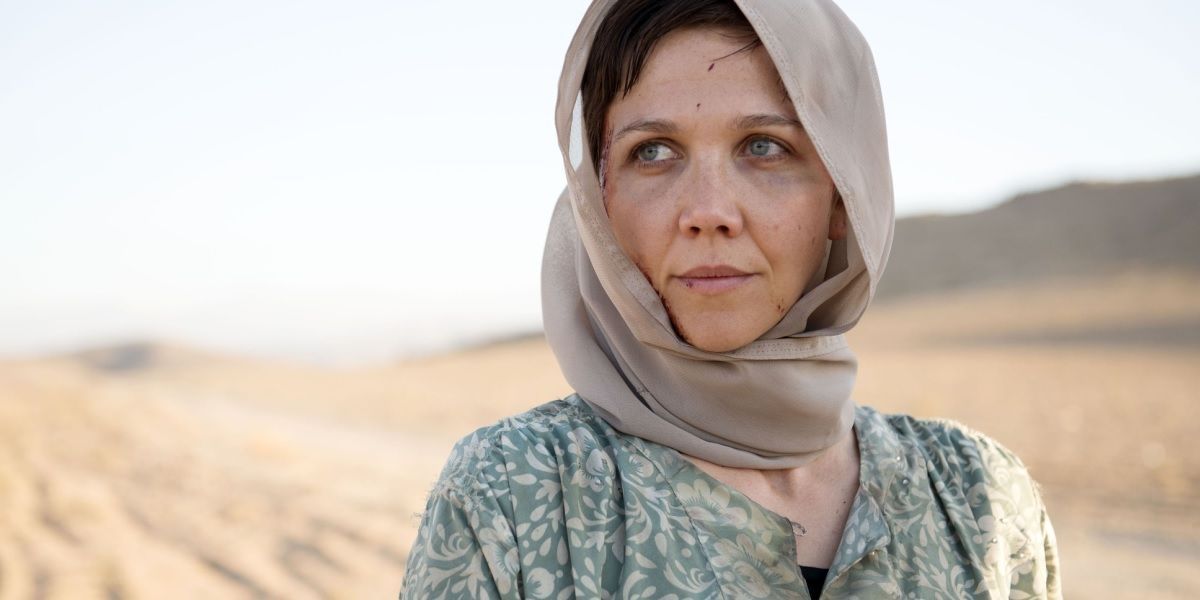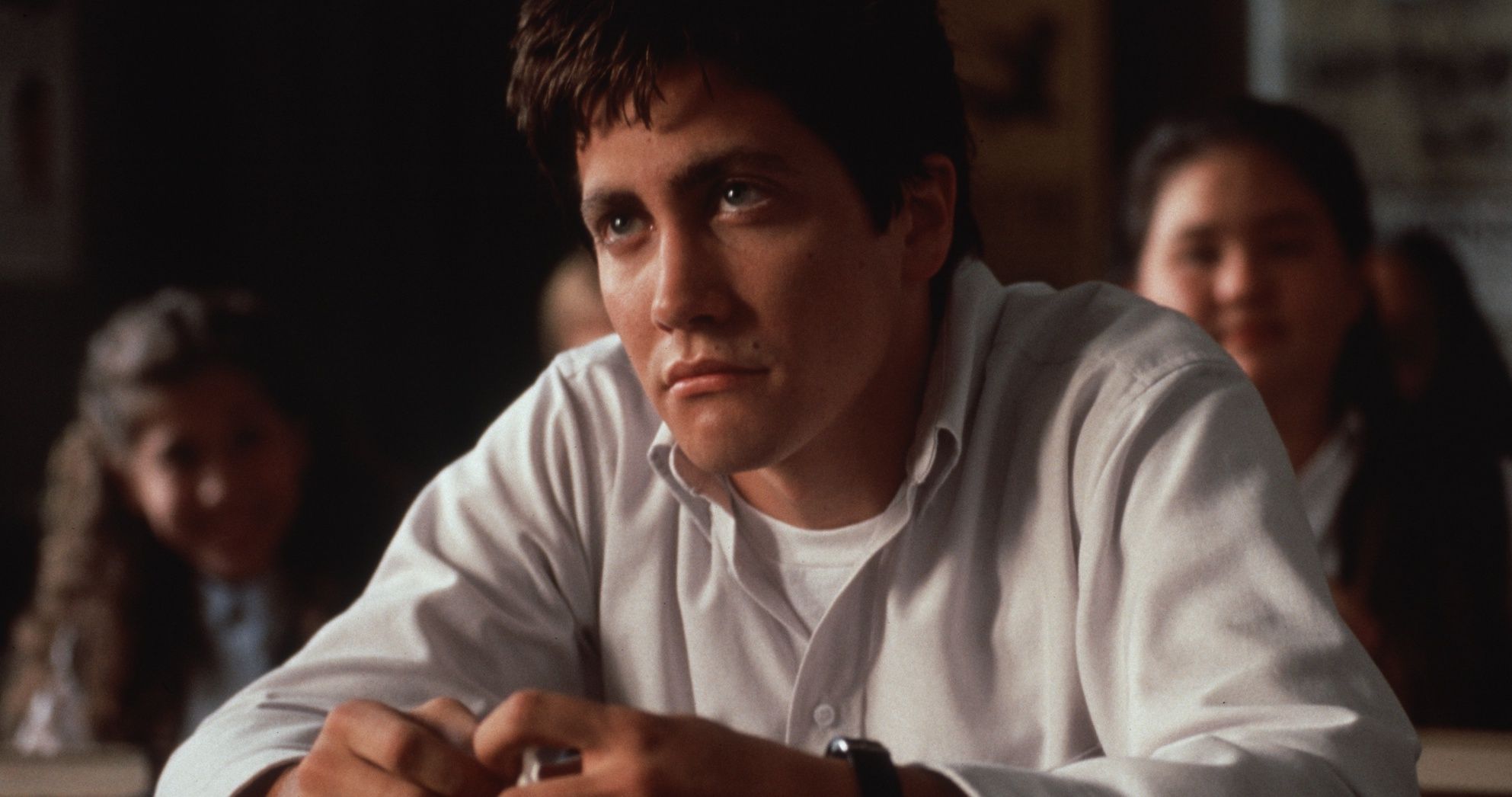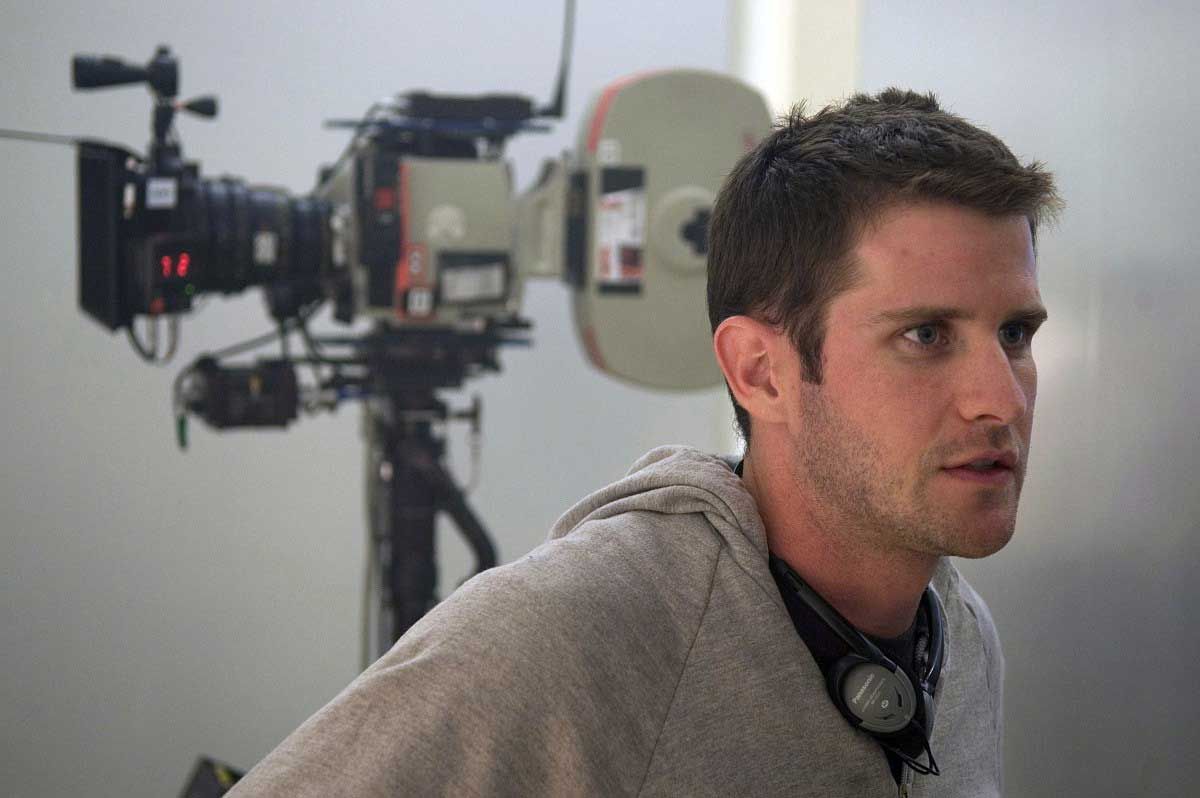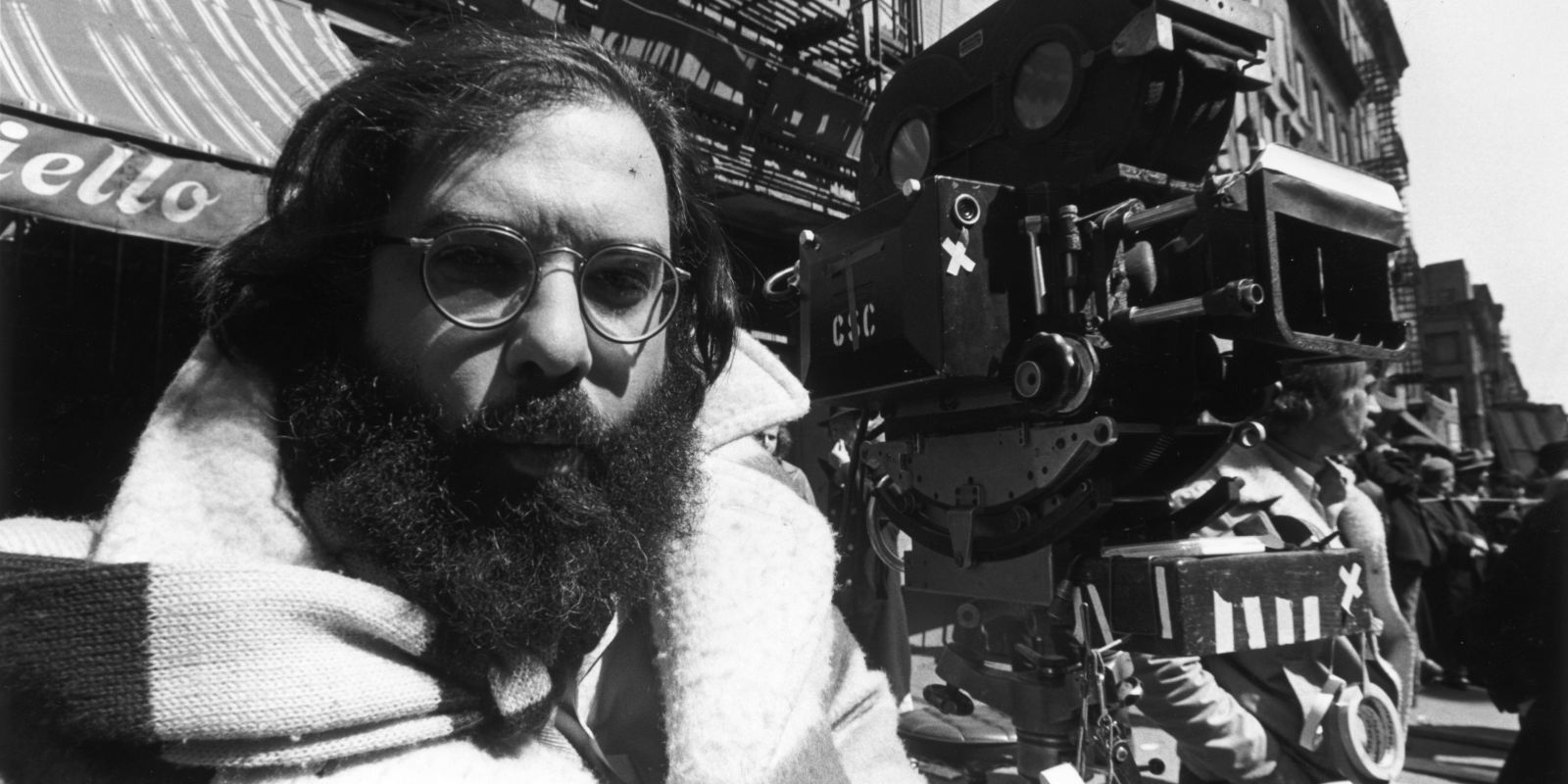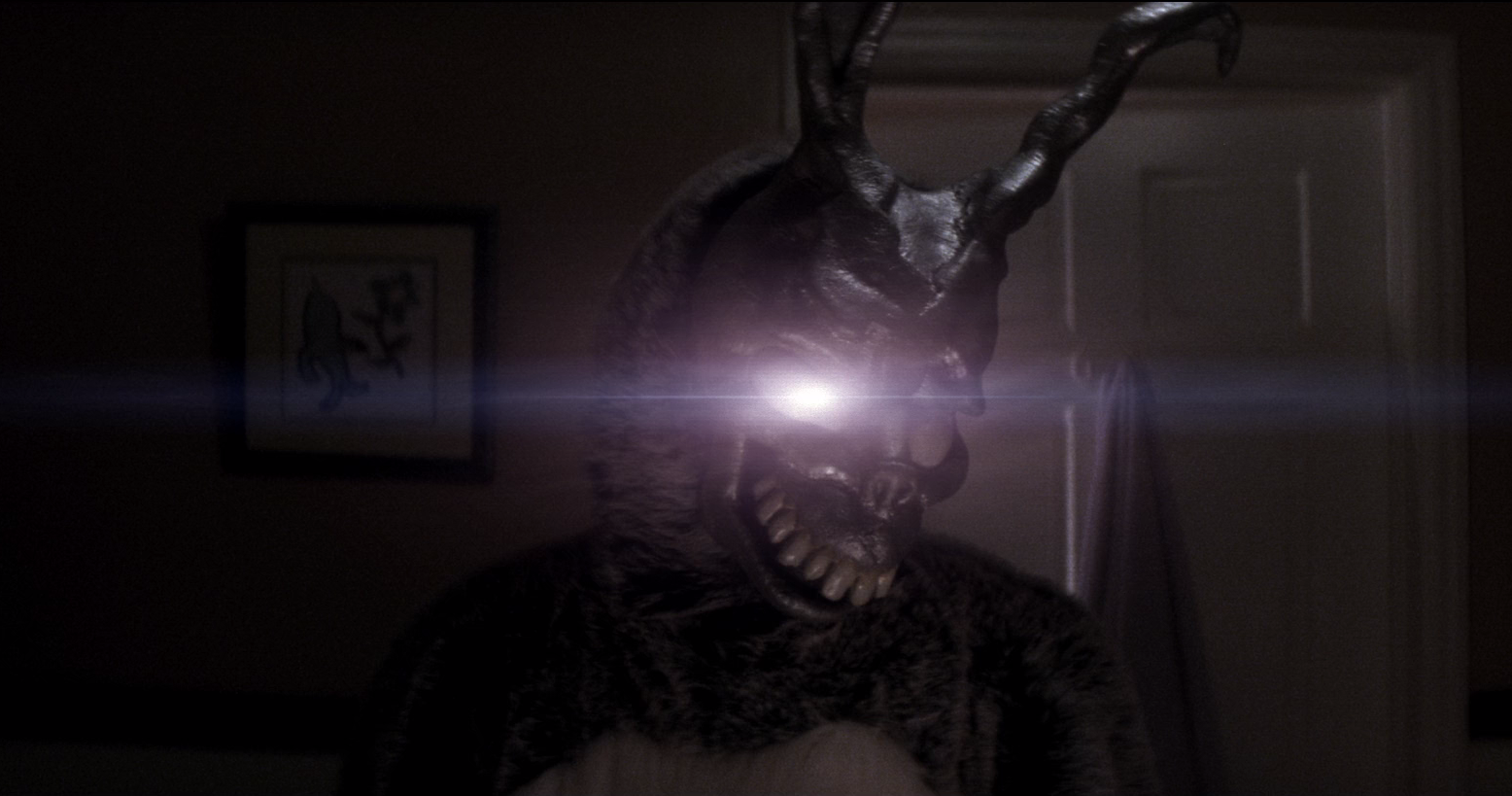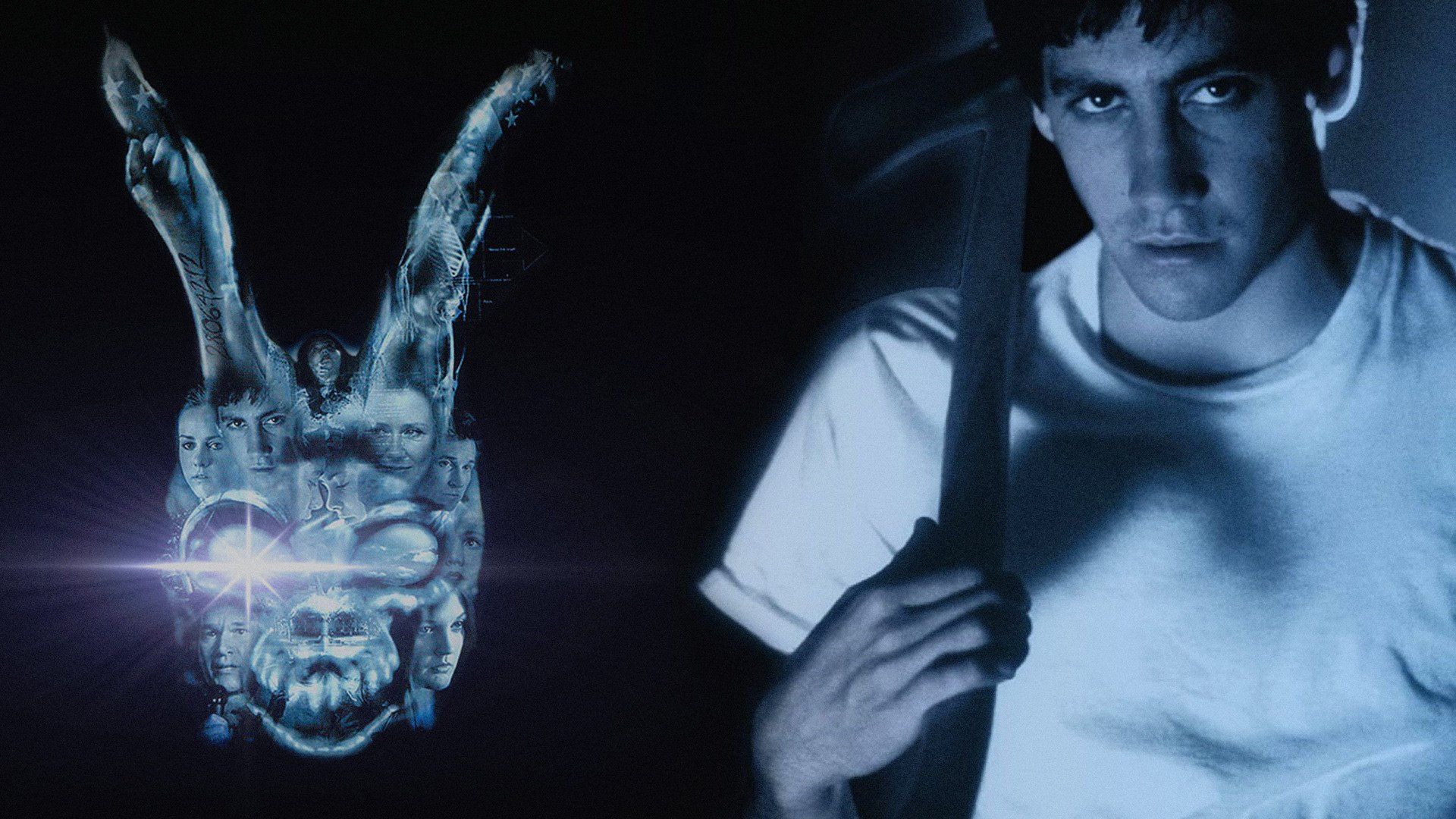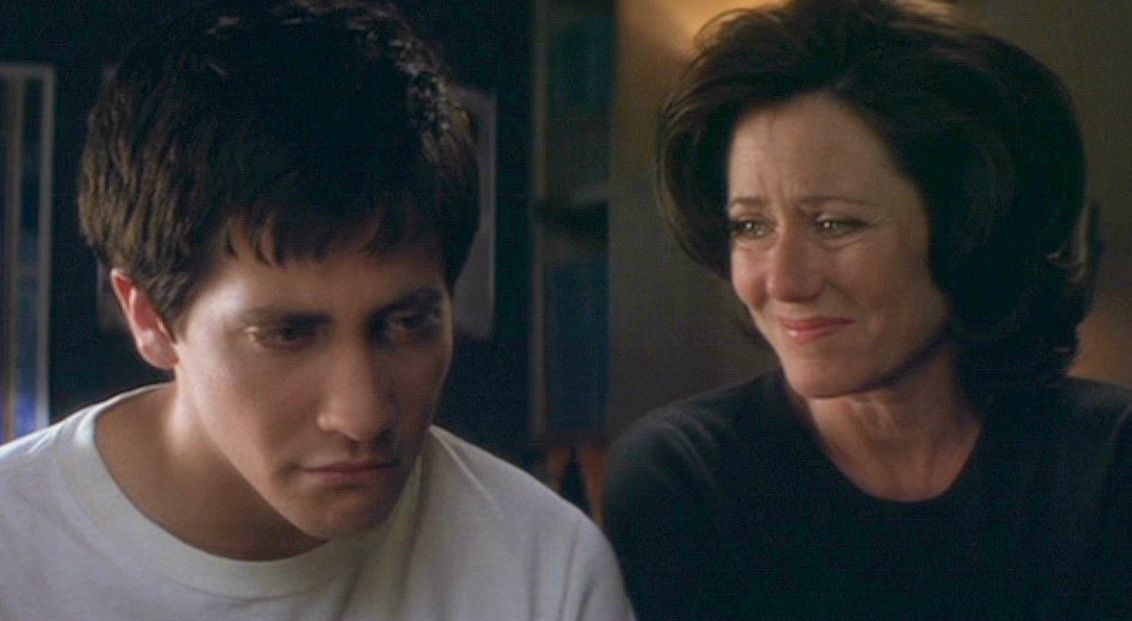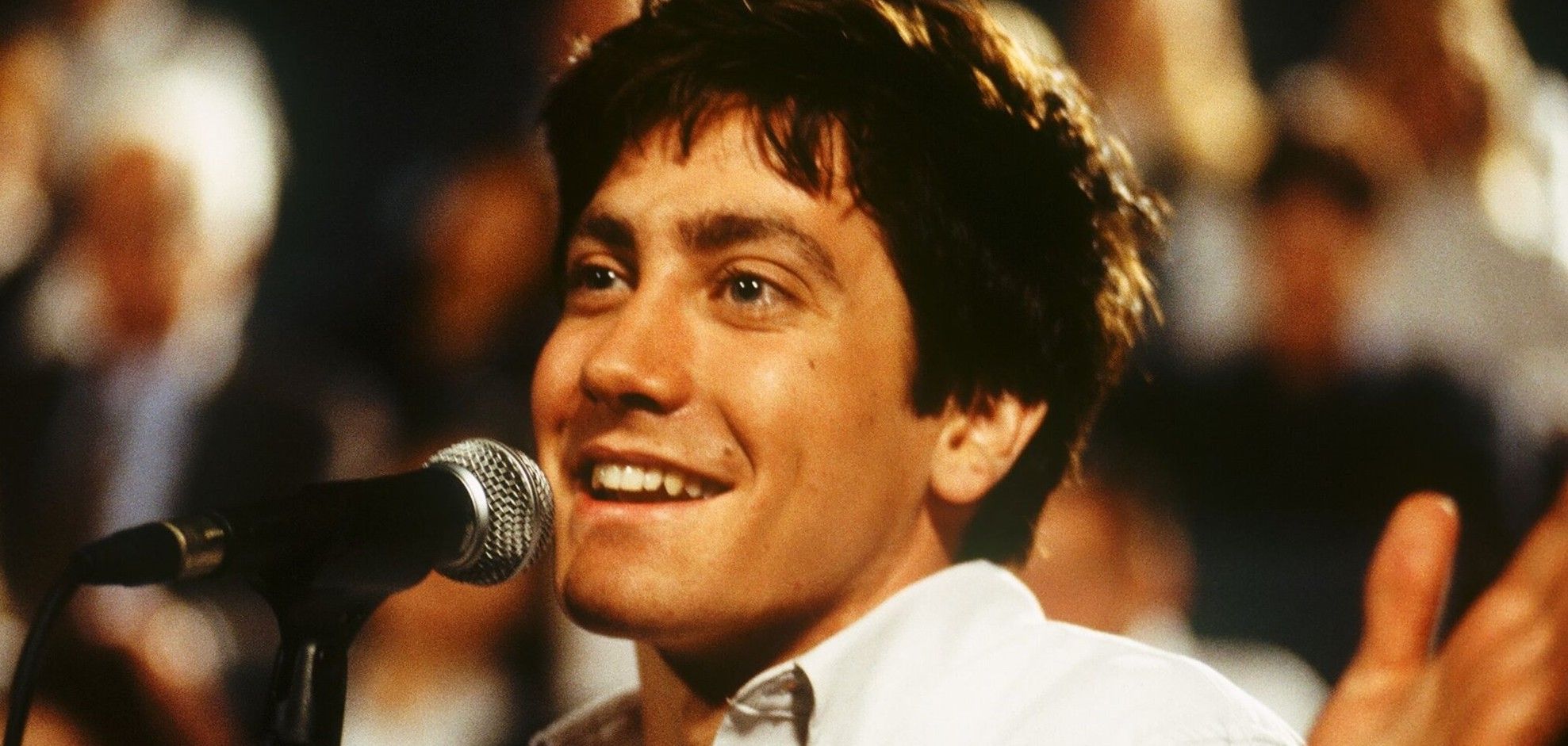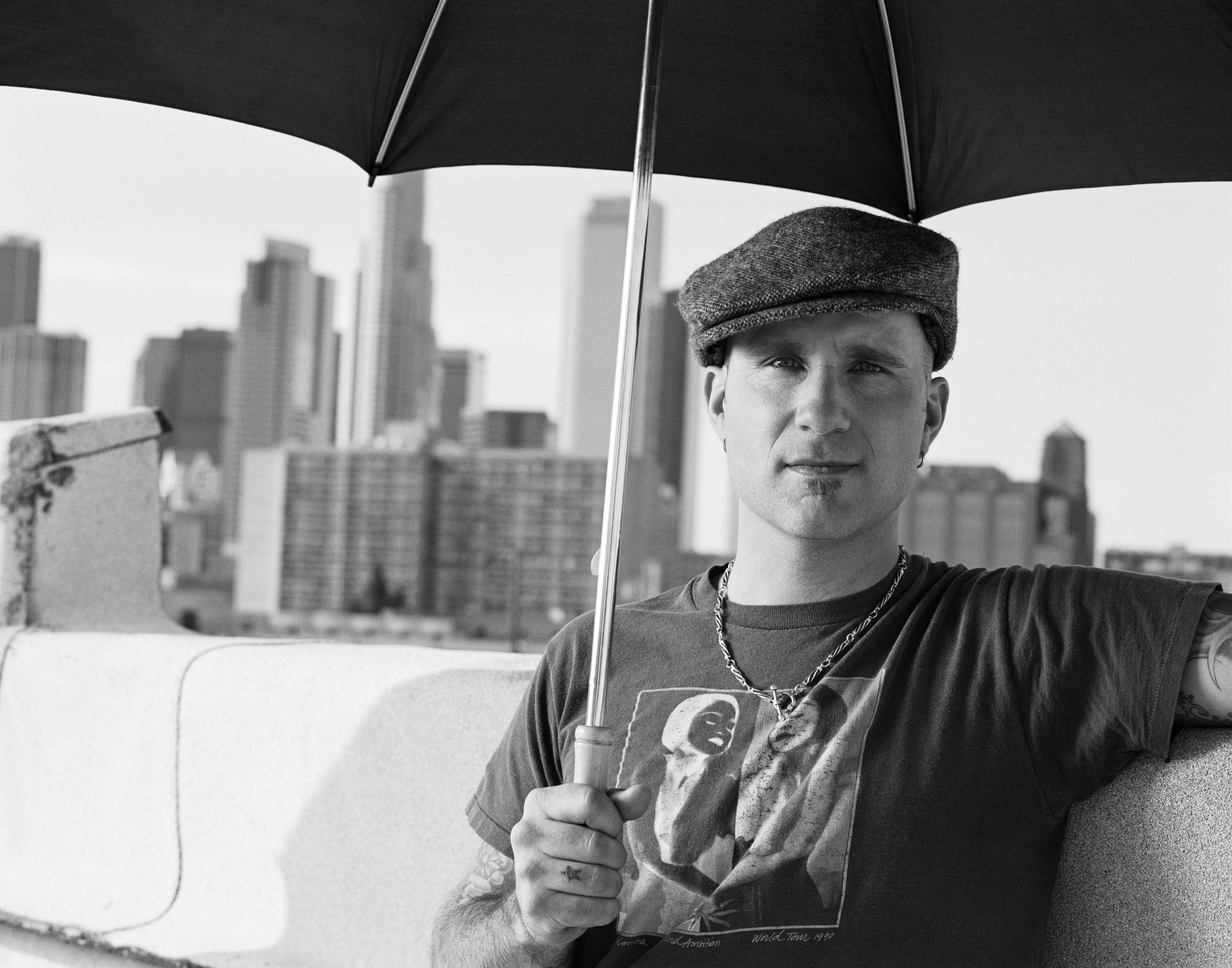Donnie Darko is a 2001 movie that was written and directed by Richard Kelly. It follows Donnie (Jake Gyllenhaal) as he tries to navigate high school and life, only to discover that the world he lives in is not exactly what he thinks it is on the surface.
When the movie initially premiered, it didn't do well in theaters, largely due to its subject matter. It debuted just after 9/11 and featured a plane engine crashing into a house.
Eventually, the beautifully intriguing and original movie found its audiences and it has steadily grown in popularity over the years.
In 2017, it was re-released to a successful run in theaters, in 4K, for its 15th anniversary. There's also talk that Richard Kelly will write and direct a sequel to the film.
The movie stars Jake and Maggie Gyllenhaal (as Donnie and Elizabeth Darko), Jena Malone (Gretchen Ross), Drew Barrymore (Karen Pomeroy), Noah Wyle (Kenneth Monnitoff), Beth Grant (Kitty Farmer), Mary McDonnell (Rose Darko), Holmes Osborne (Eddie Darko), Daveigh Chase (Samantha Darko), James Duval (Frank), Patrick Swayze (Jim Cunningham), and Seth Rogen (Ricky Danforth) in his first feature film.
Taking a look back at the cult classic movie, here are the 20 Crazy Behind-The-Scenes Revelations About Donnie Darko.
DREW BARRYMORE HELPED GET THE MOVIE MADE
It was Drew Barrymore who help secure the financing for the movie. Because of her interest in the movie and funding, Donnie Darko had a $4.5 million dollar budget.
Barrymore is no stranger to genre movies, having starred in films like E.T. and Firestarter. It was an unconventional movie and a long shot.
While the movie wasn't a financial success immediately, the interest in the project was still there, and despite some bumps in the road, it eventually found the success that early backers believed it was capable of.
In the movie, Barrymore's character is central to getting Donnie and Gretchen together.
Without their relationship, it's possible that Donnie wouldn't have had enough motivation to complete his task of saving both the primary and tangent universe.
THERE'S A CONNECTION BETWEEN DONNIE DARKO & THE DARK KNIGHT
Christopher Nolan loved Richard Kelly's movie and championed it to Newmarket. He convinced them to pick up the movie for distribution.
Also known for movies about time, dreams, meaning, and the mind, like Memento and Inception, it would make sense that Nolan could see the potential audience for the movie.
Interestingly enough, there's also a connection between Donnie Darko and The Dark Knight.
As in Graham Greene's “Destructors,” which is featured in Donnie Darko, the Joker burns money and is described as someone who just wants chaos, who “wants to see the world burn.”
Christopher Nolan's Interstellar is also about the possible mechanics of time travel, along with the wider implications of space travel.
RICHARD KELLY CREATED FRANK THE RABBIT FROM A DREAM
Dreams and sleeping are prominent themes of the movie. Donnie is saved, presumably after the TU is formed, when Frank wakes him up.
In the opening shot of the movie, Donnie is seen waking up in the middle of a road, and later on he wakes up on a golf course.
It's established that he sleepwalks, and these are some of the times when Frank appears to him.
There's been some speculation and various theories on dreams and quantum mechanics related to time travel and possible other dimensions, but nothing is solidly proved as far as many scientists are concerned.
However, these speculations could additionally tie in with some aspects of Donnie Darko, particularly Frank's role and his connection to Donnie.
THE CHARACTERS ARE IN A TANGENT UNIVERSE
While the full explanation for this is not in the theatrical release, it does appear in the Director's Cut. The TU is what Donnie and most of the characters are in for most of the movie.
Because the TU is highly unstable, most of the characters are "manipulated" and at times act in ways and say things that don't exactly make sense.
This is to push the Living Receiver (in this case Donnie) into action to save them all by destroying the TU.
If the TU is not destroyed in time, the primary universe and the tangent universe will collapse on themselves, destroying everyone.
One question that Donnie's role as the LR presents is whether or not it's possible that he is actually from the primary universe. There are some mythologies that equate sleepwalking with passing through or traveling to other dimensions.
While this is unlikely, some of the details are open to interpretation.
MIRRORS CAN SYMBOLIZE ALTERNATE REALITIES
Frank is a character who passes on later in the movie in the TU. Because of this and his connection to Donnie, he is more aware of the barrier between the primary universe and the tangent universe.
He also tends to appear to Donnie in mirrors, though that is not the only way he shows up. He seems to have some of Frank's personality, but he also seems to be more than just a person transformed by his passing and knowledge of the other side.
There's an aspect to the Frank that visits Donnie that gives him an “otherworldly entity” air.
Whether he's just Frank in a bunny suit or something else as well, from Through the Looking Glass to tales of Bloody Mary, mirrors are frequently used in fiction to represent gateways to alternate realities, and their use in Donnie Darko makes it one more tale to add to the list.
A WATERSHIP DOWN SUBPLOT WAS CUT FROM FILM
Watership Down by Richard Adams is a novel about rabbits trying to save themselves from a foreseen catastrophe by traveling to find another place to live.
It was written after the author made up a story for his kids during a car drive, and it was later made into an animated movie.
In the book, Fiver, the main character's brother, is a seer who determines that a great disaster is on the way and they have to find a new rabbit home before it's too late.
While Watership Down is still a key part of the movie, there was an important cut scene between Donnie and Gretchen talking about the meaning of it.
This scene and an additional one about the novel are restored in the Director's Cut.
THE BIZARRE COINCIDENCE WITH SAM RAIMI
In the movie, there is a sequence when Donnie and Gretchen go to the movies. The movie they see is Evil Dead, and they are the only ones in the theater besides Frank.
Richard Kelly later learned that Sam Raimi was actually driving by the theater with his son while the scene was being shot.
Raimi's son asked him if his movie was being shown at the theater. It was a bizarre coincidence fitting with the rest of the movie and how it came to be.
It was also more or less by coincidence that Evil Dead was the movie being shown during that sequence.
The original movie was supposed to be a different one altogether.
THE NUMBERS REPRESENT A LOT
Naturally, a movie about time travel is going to involve numbers and mathematical equations. However, it turns out that Donnie Darko has more than a few number references for audiences to mull over.
For instance, the numbers on Donnie's arm (28:06:42:12) add up to 88. However, if you subtract or add one to the numbers (in this sequence: -1+1+1-1), the numbers add up to exactly one lunar month.
Throughout the movie, the number eight repeatedly pops up. It's set in 1988, and a DeLorean is mentioned, which in Back to the Future, had to go 88 mph to travel through time.
Eight on its side looks like an infinity symbol, which is often referenced in mathematics and time travel.
TIME TRAVEL IN DONNIE DARKO FITS WITH CURRENT THEORIES AND POSSIBLE TECHNOLOGY
Ronald Mallet has been interested in time travel since he was a child. After reading The Time Machine by HG Wells, he discovered information about Albert Einstein's Theory of Relativity and went on to become a professor.
As with Einstein, Stephen Hawking, Michio Kaku, and other theoretical physicists, he believed that time travel was possible.
He experimented and eventually created a machine that essentially curves light back upon itself, which is a part of proving time travel. Many scientists believe that gravity and black holes may also play a role.
In the movie, Donnie uses a tunnel to send the engine back to the primary universe, and an earlier point in time (some might interpret that Donnie didn't send the engine back, he just had to be there when it happened, but that has been explained).
In the movie, water also plays a central role to time travel.
EVERY MAJOR DISTRIBUTOR PASSED ON IT AT SUNDANCE
At the time the movie was made, most distributors considered it a tough movie to sell.
Many movie distributors didn't know how to market the movie or who it would appeal to.
However, Newmarket had successfully distributed the time and memory related movie Memento. So they picked up the movie for distribution.
It was released just after 9/11, though, and because of certain aspects of the subject matter (namely, a plane engine crashing not only through a house), the movie didn't do well in theaters, earning just $500,000 of its $4.2 million dollar budget.
However, through DVD distribution and overseas interest in the movie, it eventually found its audience, gained momentum, and has since become a cult classic.
MAGGIE GYLLENHAAL ORIGINALLY TURNED DOWN THE ROLE OF DONNIE'S SISTER
According to The Guardian, Maggie was reluctant to take the role because she didn't want to be picked just because she and Jake were siblings.
Jake did push for Maggie to be involved in the movie. However, Richard Kelly liked the real-life dynamic between the two and believed that their chemistry and acting skills would be a perfect match.
Audiences knowing, beforehand or after-the-fact, that the two are siblings in real life added another level to the movie and the energy in their scenes.
Maggie Gyllenhaal started acting at a young age and appeared in several movies before being asked to take on the role of Elizabeth Darko. She later had a starring role in Nolan's Dark Knight.
ACTORS HAD FREEDOM WITH THEIR CHARACTER'S BEHAVIOR
When asked about character choices for Donnie Darko, Jake Gyllenhaal indicated that he had some freedom in how he approached the role.
With the scenes between Donnie and Frank, Jake chose to use a voice similar to that of a child's.
His reasoning was that Frank the Rabbit is almost like a security blanket for Donnie, and in the state that he's usually in – somewhere between awake and asleep – when he talks to Frank, it would make sense that he would sort of revert to a more vulnerable state and way of communicating.
IT WAS WRITTEN IN 28 DAYS, FILMED IN 28 DAYS, & TAKES PLACE OVER 28 DAYS
The movie took 28 days to film, and takes place over 28 days. To add to this, Richard Kelly has stated that it took roughly 28 days to write the initial script.
Shooting schedules for independent movies (sometimes even for studio films) can be short due to budget constraints and availability. So for this unconventional gem on a limited budget, it's no surprise that the schedule had to be cut relatively close.
Additionally, a lunar month is 28 days long, and in keeping with the importance of symbolism in the movie, the song “Killing Moon” by Echo and the Bunnymen plays in the opening scene.
As with Kelly's inspiration for Frank the Rabbit, Ian Mcculloch stated that the lyrics came to him in a dream – specifically the lines “'Fate up against your will. Through the thick and thin. He will wait until you give yourself to him.'”
FRANCIS FORD COPPOLA HAD A HAND IN THE PROCESS
Another person who was interested in the movie early on was Francis Ford Coppola. Jason Swartzman, his nephew, was originally interested in playing the character of Donnie, and brought the project to Coppola.
However, he wanted to spend some more time working with Richard Kelly and plotting out how the movie could work.
The extra time would have meant that Kelly would lose the already guaranteed funding for the movie-- because of Barrymore's schedule, there was only a short window of time to get things done.
Coppola gave some Kelly some insight on what he thought of the movie overall and about what he felt was an important theme in the script.
THE MOVIE C.H.U.D. WAS REPLACED BY EVIL DEAD
Initially, the movie that was supposed to play while Donnie, Gretchen, and Frank sat in the theater was C.H.U.D., but there was extensive paperwork that needed to be filed before they could find out if it was all right to use clips from the movie.
It would have taken close to two months to get that information, and they needed to get things ready within one week.
Fortunately, Sam Raimi allowed them to use clips from Evil Dead at no additional charge.
Scenes used featured clocks and distortions, and according to Richard Kelly, these scenes turned out to be more fitting for the subject matter of Donnie Darko than what they originally wanted to use.
THE DIRECTOR'S CUT FEATURES PAGES FROM THE PHILOSOPHY OF TIME
The 2004 Director's Cut of the movie featured about 20 minutes of extra footage, and also included pages from the Philosophy of Time Travel, the book created by the character Roberta Sparrow (Patience Cleveland).
It explains in more detail the premise of the movie, including how the primary and tangent universes interact, Donnie's purpose as a living receiver, and certain theories about time travel.
In general, audiences had mixed feelings about the Director's Cut, with some believing that the original was better. Others, however, appreciated the work that went into it. Some liked both equally.
Either way, the Director's Cut contributed to the growing popularity of the movie.
THE OFFICIAL WEBSITE IS CONSIDERED MYSTERIOUS
While the Donnie Darko site is most likely officially associated with the movie, the lack of confirmation creates a bit of mystery, which fits well with the movie.
The website gives additional details about the movie, including more background about what happened to some of the characters.
One section includes obituaries and more information about the FAA and the plane's engine. Other sections include the text of the Philosophy of Time Travel, an explanation and alternative explanations for the movie, a gallery, and a quiz.
The explanation pages detail how the movie unfolds, but also examine other possible scenarios as well as unanswered questions, leaving room for different interpretations and expansions upon the original ideas.
THE NUMBERS ON DONNIE'S ARM REPRESENT MORE THAN A COUNTDOWN
According to Zimbio, the numbers, minus or plus one, equal one lunar month. Interestingly enough, the pattern of -1+1+1-1 (which is the minus/plus one pattern for the date and time on Donnie's arm) is similar to the beginning 0110 pattern of the Thue-Morse sequence. (It should also be noted that both -1 and zero can "equal" or represent infinity.)
This code is also one of several mathematical methods used to create what is known as the Koch curve, a fractal curve also known as the Koch star or snowflake.
The Koch curve is described as being infinite within a finite space, and the Thue-Morse sequence can go on forever.
This all ties in nicely with theories of infinite/finite time and time travel presented in Donnie Darko.
RICHARD KELLY IS POSSIBLY PLANNING A SEQUEL
While there was another movie, a sequel about Donnie's younger sister, set in the Donnie Darko universe, Richard Kelly wasn't involved with the movie.
For a while there's been speculation regarding Kelly creating another movie in the that world, especially given the continually growing fanbase for Donnie Darko.
In his Den of Geek interview Kelly stated, “I think there’s something much bigger and more ambitious to do in that universe. It’s big and expensive and I think there’s time to get to that."
He continued: "I want to make sure we’ve got the budget to do it justice and not to compromise anything. Another story in this world needs resources and we need to have that in place.”
IT WAS EASY TO GET THE RIGHTS TO '80s MUSIC
While it's difficult to imagine now that there was ever a time when '80s music wasn't expensive and highly sought after for movies and television shows, in the late '90s and early '00s, it was easier to get the rights to '80s music than it is now.
According to Richard Kelly, there wasn't much demand for it at the time and so they didn't have too much difficulty affording most of the songs they wanted.
The only song the production wasn't able to secure was “West End Girls” by Pet Shop Boys.
However, the Gary Jules rendition of the Tears for Fears song “Mad World” has become solidified with the movie and captured the overall theme and mood perfectly.
---
Can you think of any other secrets behind the making of Donnie Darko? Let us know in the comments!

